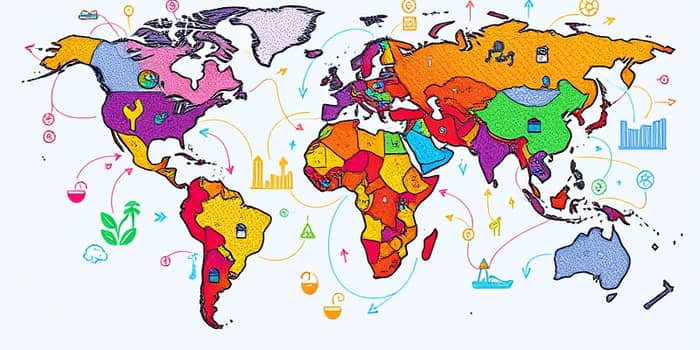
As global growth decelerates, identifying pathways to sustainable expansion has never been more crucial. In this comprehensive exploration, we map out the evolving economic terrain, highlight regional divergences, and unpack strategic levers that can reignite momentum across continents.
By combining rigorous data analysis with practical insights, this article offers a roadmap for policymakers, business leaders, and investors keen to tap into the vast reservoir of worldwide potential.
The period from 2020 through 2027 is shaping up to be the slowest decade for average global growth since the 1960s. A convergence of forecasts underscores a broad slowdown that has reverberated across nearly every major economy.
Leading projections for 2025 reveal a tightening growth outlook:
This compares with 3.3% expansion in 2024, marking a notable deceleration. More than 70% of economies have seen their growth estimates trimmed, a wake-up call that prolonged stagnation may hamper efforts to reduce global inequality.
Structural factors—including demographic shifts, fragmented supply chains, and an uneven post-pandemic recovery—have compounded these headwinds, making innovation and policy agility essential ingredients for future progress.
While monetary policy once dominated macroeconomic management, trade policy has emerged as a principal lever in many regions. Tariff spikes and regulatory frictions now directly influence capital allocation and corporate strategies.
Inflation is expected to moderate to around 3.6% in 2025, but progress will vary. The United States may see residual price pressures from import duties, while the Euro Area and parts of Asia could benefit from disinflationary dynamics as energy costs retreat.
For businesses and investors, uncertainty over policy direction demands robust scenario planning. Companies must build flexibility into their supply chains and maintain liquidity buffers to withstand sudden shifts in trade regimes or financial market volatility.
Growth opportunities now hinge on regional strengths and targeted sectoral investments. Understanding these nuances allows stakeholders to allocate resources where returns are highest.
Regional data tell a nuanced story. China’s robust policy support contrasts with the US’s slower expansion, hampered by lingering tariff drag. India’s youthful workforce and digital surge point to sustained outperformance, while Africa’s blend of energy investments and mobile connectivity offers fertile ground for investors.
Sectoral drivers further underscore these trends:
Investment in innovation remains paramount. With debt levels near historic highs, channeling capital into scalable climate technologies, resilient logistics, and digital platforms can yield outsized gains. Public strategies should de-risk breakthrough research by offering matching grants and tax incentives.
Boosting labor force participation can unlock dormant economic energy. Policies that support flexible work arrangements, expand childcare access, and promote inclusive migration frameworks will help more individuals contribute productively. Continuous reskilling initiatives are vital to prepare workers for the AI-driven economy.
Reinvigorating international cooperation on trade and climate can rebuild the predictability essential for long-term investment. Multilateral dialogues should focus on lowering non-tariff barriers, harmonizing digital regulations, and coordinating green public goods financing.
Building resilience amid volatility means diversifying supply partner networks, maintaining strategic reserves of critical inputs, and leveraging real-time analytics to anticipate disruptions. Firms that embed flexibility into their operations will be better positioned to adapt to sudden policy or market shifts.
Translating potential into performance requires a cohesive policy agenda supported by data-driven decision making and collaborative governance.
Implementation should rest on continuous monitoring of economic indicators, transparent stakeholder consultations, and adaptive policymaking that can pivot as new data emerge. Embedding environmental and social metrics alongside traditional GDP targets can ensure that growth is both inclusive and sustainable.
Although growth forecasts may be subdued, the opportunities to harness innovation, leverage demographic shifts, and deepen cooperation are vast. By embracing a forward-looking mindset and deploying smart policy tools, governments and private actors can kindle new engines of growth across the planet.
Unlocking global potential is not an accident of geography or time—it is the result of intentional, collaborative action. With strategic vision and steadfast commitment, the world can navigate current headwinds and chart a course toward resilient, prosperous futures for all.
References













